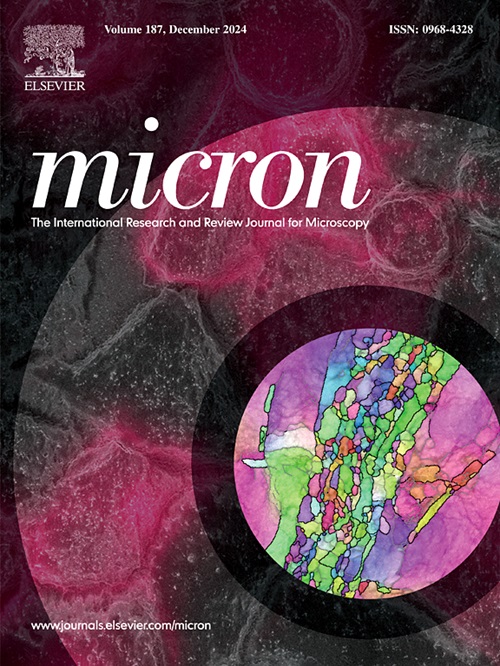Poly(L-lactide)/nano-hydroxyapatite piezoelectric scaffolds for tissue engineering
IF 2.5
3区 工程技术
Q1 MICROSCOPY
引用次数: 0
Abstract
The development of bone tissue engineering, a field with significant potential, requires a biomaterial with high bioactivity. The aim of this manuscript was to fabricate a nanofibrous poly(L-lactide) (PLLA) scaffold containing nano-hydroxyapatite (nHA) to investigate PLLA/nHA composites, particularly the effect of fiber arrangement and the addition of nHA on the piezoelectric phases and piezoelectricity of PLLA samples. In this study, we evaluated the effect of nHA particles on a PLLA-based electrospun scaffold with random and aligned fiber orientations. The addition of nHA increased the surface free energy of PLLA/nHA (42.9 mN/m) compared to PLLA (33.1 mN/m) in the case of aligned fibers. WAXS results indicated that at room temperature, all the fibers are in an amorphous state indicated by a lack of diffraction peaks and amorphous halo. DSC analysis showed that all samples located in the amorphous/disordered alpha' phase crystallize intensively at temperatures just above the Tg and recrystallize on further heating, achieving significantly higher crystallinity for pure PLLA than for doped nHA, 70 % vs 40 %, respectively. Additionally, PLLA/nHA fibers show a lower heat capacity for PLLA in the amorphous state, indicating that nHA reduces the molecular mobility of PLLA. Moreover, piezoelectric constant d33 was found to increase with the addition of nHA and for the aligned orientation of the fibers. In vitro tests confirmed that the addition of nHA and the aligned orientation of nanofibers increased osteoblast proliferation.
用于组织工程的聚(L-内酰胺)/纳米羟基磷灰石压电支架。
骨组织工程是一个潜力巨大的领域,其发展需要一种具有高生物活性的生物材料。本手稿旨在制作含有纳米羟基磷灰石(nHA)的纳米纤维聚(L-内酰胺)(PLLA)支架,以研究 PLLA/nHA 复合材料,特别是纤维排列和添加 nHA 对 PLLA 样品压电相和压电性的影响。在本研究中,我们评估了 nHA 颗粒对纤维取向随机和排列整齐的聚乳酸电纺支架的影响。添加 nHA 后,PLLA/nHA 的表面自由能(42.9 mN/m)比对齐纤维情况下的 PLLA(33.1 mN/m)有所增加。WAXS 结果表明,在室温下,所有纤维都处于无定形状态,表现为缺少衍射峰和无定形晕。DSC 分析表明,所有处于无定形/有序 alpha'相的样品都会在刚刚超过 Tg 的温度下密集结晶,并在进一步加热时重新结晶,纯 PLLA 的结晶度明显高于掺杂的 nHA,分别为 70% 和 40%。此外,PLLA/nHA 纤维在无定形状态下显示出较低的热容量,表明 nHA 降低了 PLLA 的分子流动性。此外,还发现压电常数 d33 会随着 nHA 的添加和纤维的排列取向而增加。体外测试证实,添加 nHA 和纳米纤维的排列取向增加了成骨细胞的增殖。
本文章由计算机程序翻译,如有差异,请以英文原文为准。
求助全文
约1分钟内获得全文
求助全文
来源期刊

Micron
工程技术-显微镜技术
CiteScore
4.30
自引率
4.20%
发文量
100
审稿时长
31 days
期刊介绍:
Micron is an interdisciplinary forum for all work that involves new applications of microscopy or where advanced microscopy plays a central role. The journal will publish on the design, methods, application, practice or theory of microscopy and microanalysis, including reports on optical, electron-beam, X-ray microtomography, and scanning-probe systems. It also aims at the regular publication of review papers, short communications, as well as thematic issues on contemporary developments in microscopy and microanalysis. The journal embraces original research in which microscopy has contributed significantly to knowledge in biology, life science, nanoscience and nanotechnology, materials science and engineering.
 求助内容:
求助内容: 应助结果提醒方式:
应助结果提醒方式:


